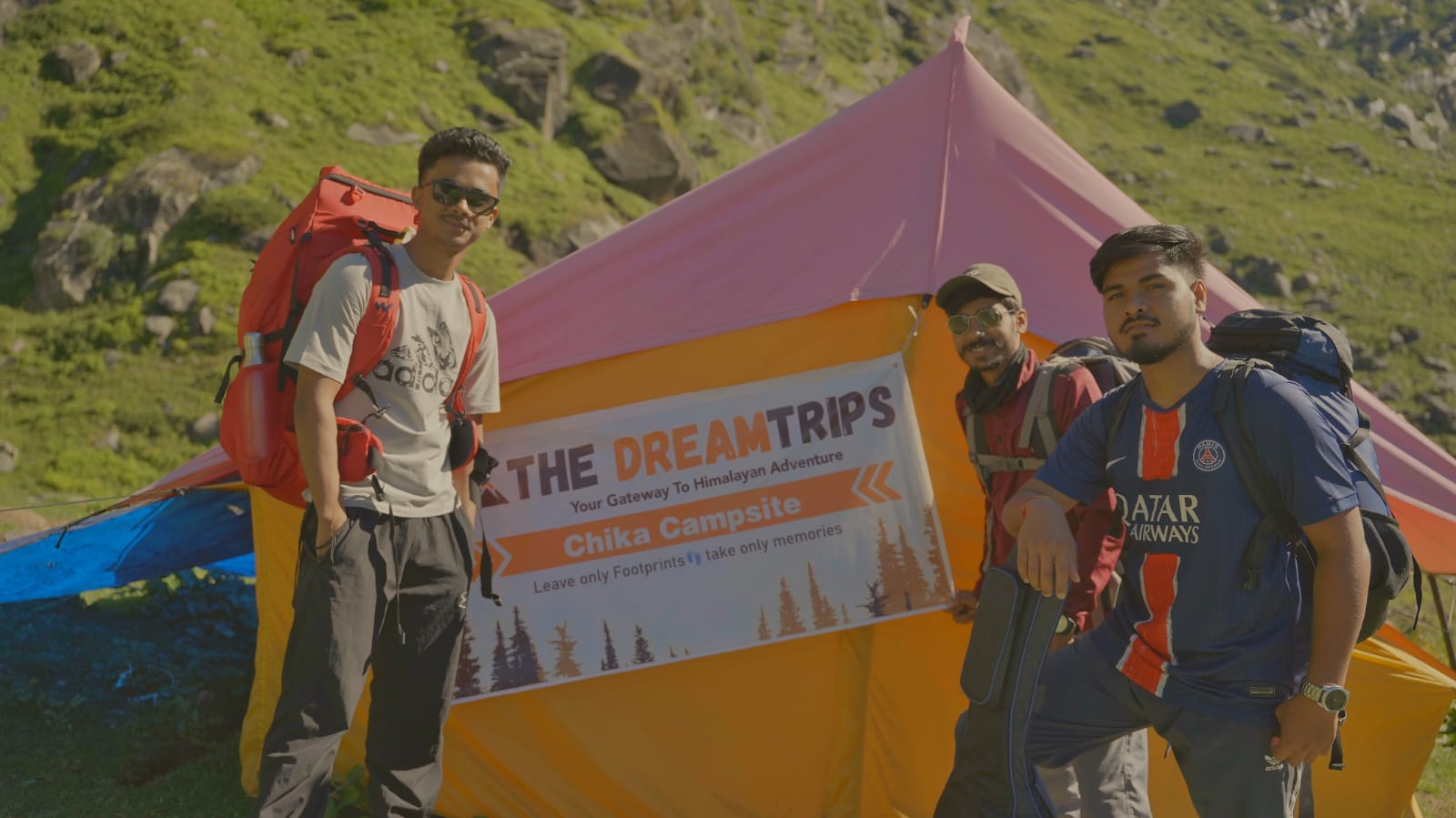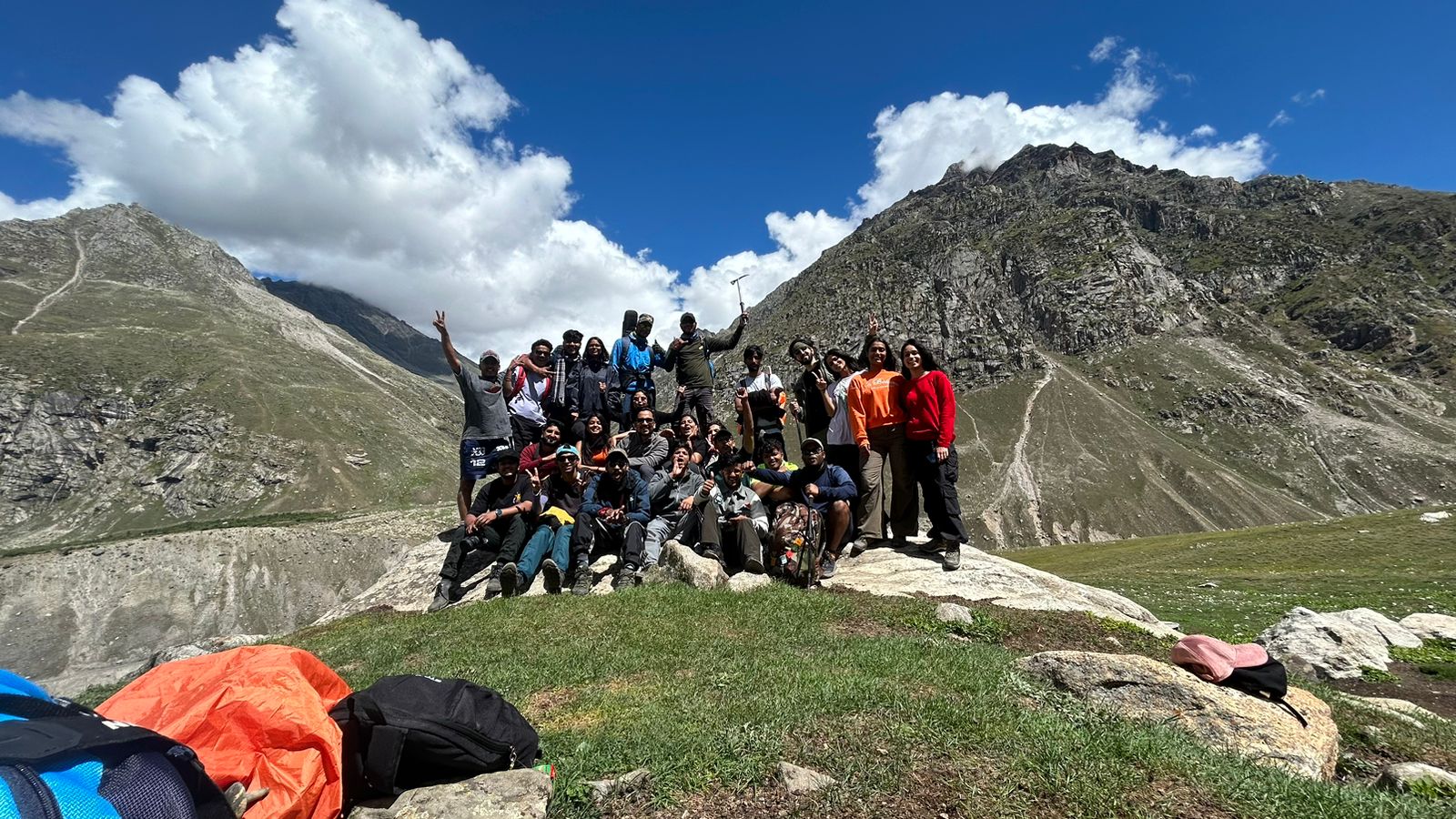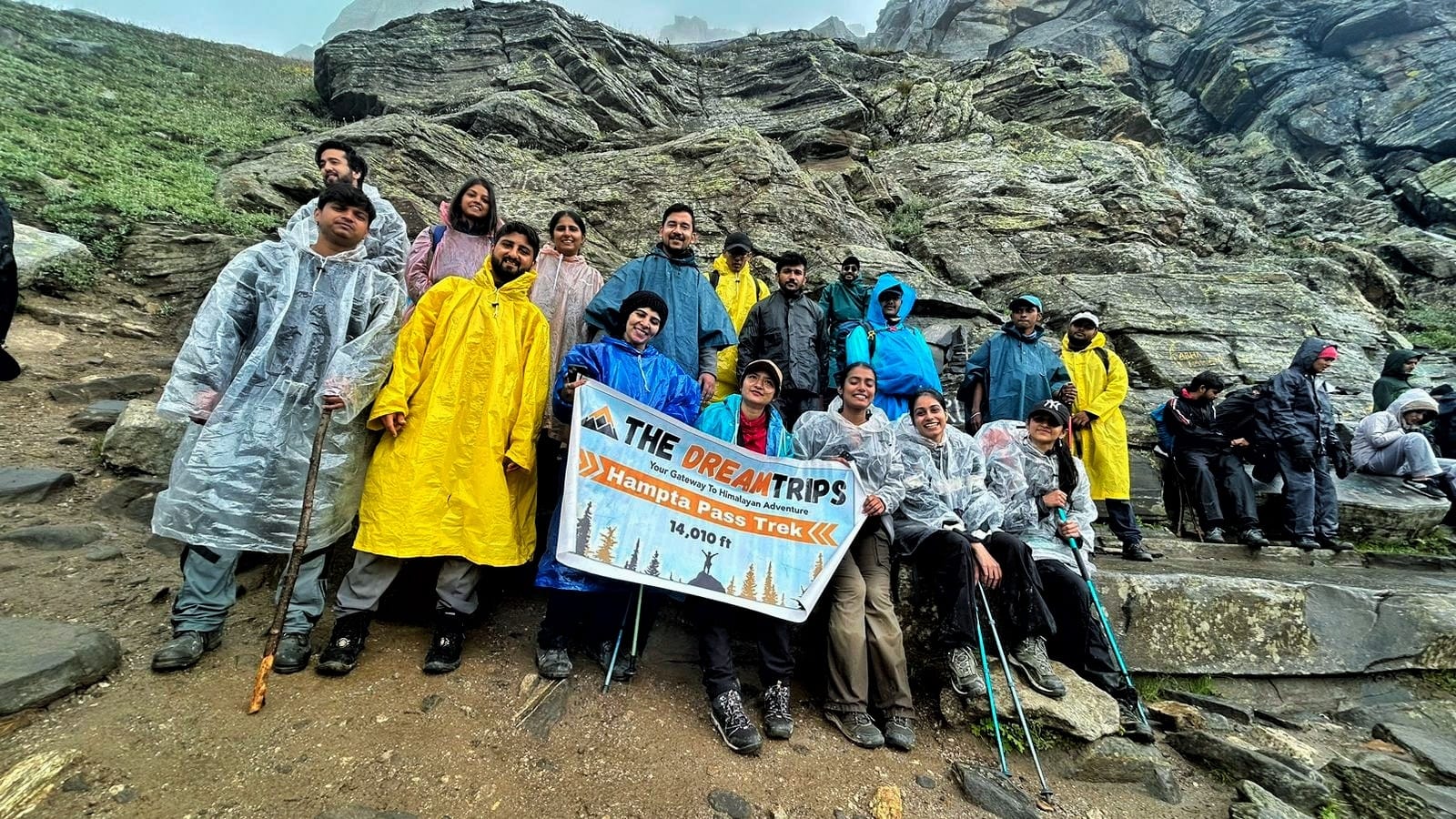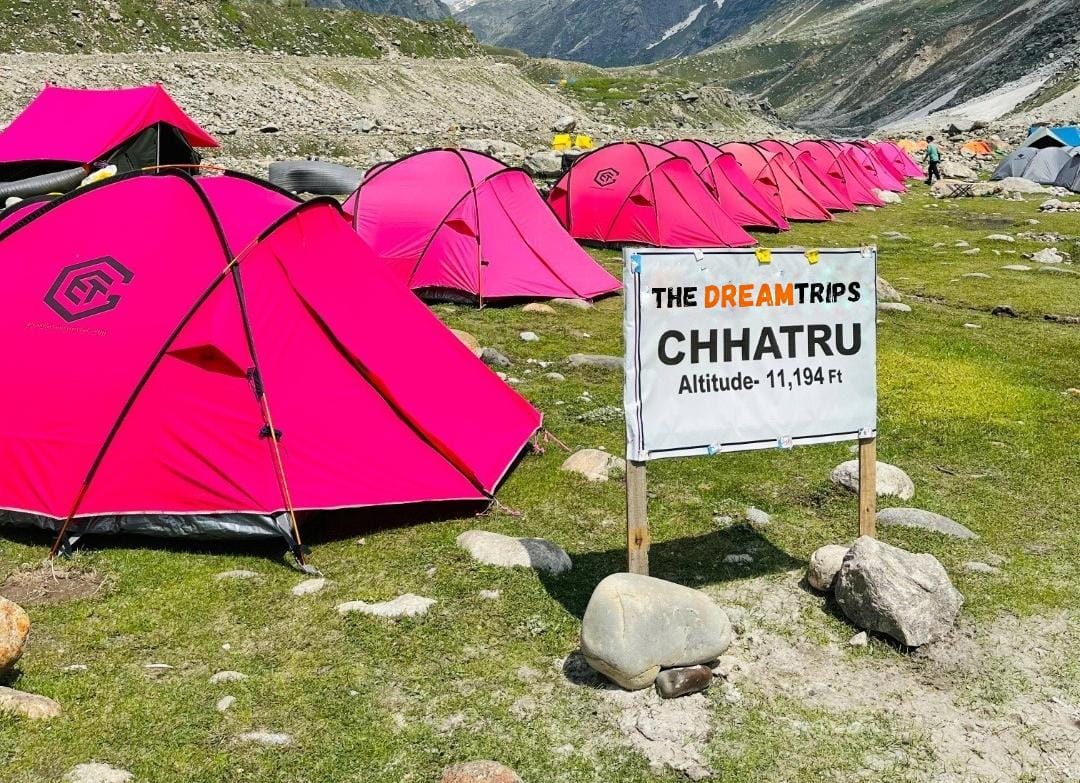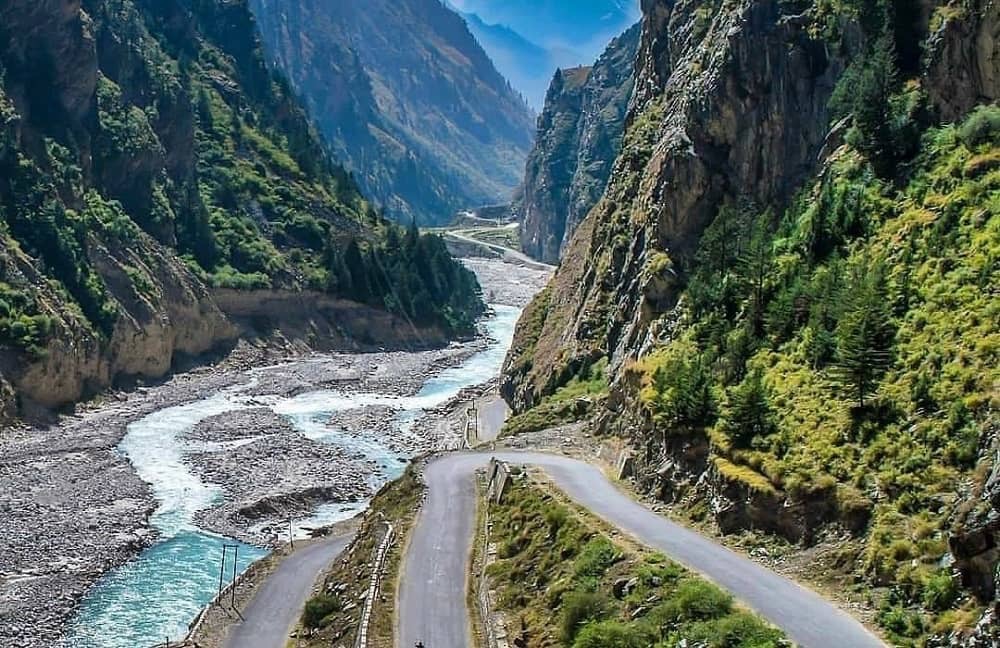Trek Grade
easy - Moderate
Highest Altitude
14,000 f
Base Camp
Manali
Best Time
Mar - Sept
Hampta Pass Trek
Can you imagine walking in a world which is full of green fields, clear rivers, and snow-covered mountains. This is the actual experience of the Hampta Pass Trek with Dream Trips. It is located in the Himalayas and Hampta Pass connects the Kullu Valley to the Spiti Valley, which creates a journey full of changing scenery and surprises.
Starting in Manali, trekkers first step into green forests with tall trees and bright flowers. Each step feels like an adventure as the path opens up to beautiful meadows filled with wildflowers. The higher you go, the more magical it becomes—soon, you’re surrounded by snow-covered mountains and even get to walk over some patches of snow!
As trekkers cross rivers, climb gentle hills, and pass through misty valleys, they can also spot animals like sheep, horses, and yaks grazing along the trails. Reaching Hampta Pass, everyone gets to enjoy an incredible view of both valleys below—one green and one rocky. The trek is simple and will pay enormous dividends for your physical exertion, with stunning views of the most beautiful mountains of the Himalayan Range
During the night, the trekkers camp under the stars, with a sky that looks more magical here than anywhere else in this world. With Dream Trips, everything is planned in a way to make sure everyone feels safe, enjoys fresh meals, and experiences the beauty of nature.
From the colourful eye catching flowers to the snowy peaks, the Hampta Pass Trek has it all. And Dream Trips takes care of all the safety measures to ensure that you experience the true beauty of the Himalayas. It is perfect for beginners and experienced trekkers both.
Trekking tips to be a pro
Essential Trekking Tips with The Dream Trips to trek like a pro. Are you planning your next trek? Take a look at these essential trekking tips from The Dream Trips! Whether you’re just starting out or have years of experience, these straightforward yet effective tips will help you stay safe, pack wisely, and make the most of every moment on your adventure. From keeping hydrated to managing your pace, each piece of advice is crafted to enhance your journey and make it more enjoyable. Save this guide and get ready for your next mountain adventure!
Know Everything About Acute Mountain Sickness
Acute Mountain Sickness (AMS) which is also commonly known as altitude sickness, is a condition that impacts trekkers and travelers at high altitude—usually above 8,000 feet above sea level . At this height, the air starts getting thin and contains less oxygen, and this sudden change makes it difficult for the body to adapt, and leads to AMS symptoms. As a pro adventure travel company, The Dream Trips makes it a priority to ensure that all trekkers are well-informed and prepared for these challenges, particularly during high-altitude treks in the Himalayas. With The Dream Trips’ expertise in high-altitude trekking, you can confidently explore the breathtaking landscapes of the Himalayas. Each trek is carefully planned with safety and acclimatization as top priorities, allowing you to fully enjoy your adventure while reducing the risk of AMS. Rely on The Dream Trips to lead you through safe and memorable high-altitude experiences.
Day Wise Detailed Itinerary
Day 1: Manali to Jobra (Drive) and Trek to Chika
- Drive: 2 hours (Manali to Jobra, 40 km by car)
- Trek Distance: 2 km
- Time: About 1 hour of trekking
- Altitude: Start at 2,050 m (Manali) to reach 2,740 m at Chika
After a short drive from Manali to Jobra, the trek begins! Walking through tall trees and green meadows, the trail is gentle and perfect for warming up. By evening, you’ll set up camp at Chika, where Dream Trips will serve a nice dinner. Rest under a starry sky before a big day ahead.

Day 2: Chika to Balu Ka Ghera
- Trek Distance: 5 km
- Time: 4-5 hours of trekking
- Altitude: Gain from 2,740 m to 3,600 m
Today, the trail takes you through wide meadows with bright flowers, clear streams, and snow-capped mountains coming into view. As you climb up to Balu Ka Ghera, you’ll notice the air gets cooler. Dream Trips ensures your camp here is cozy, so you can rest well before the most exciting day of the trek.
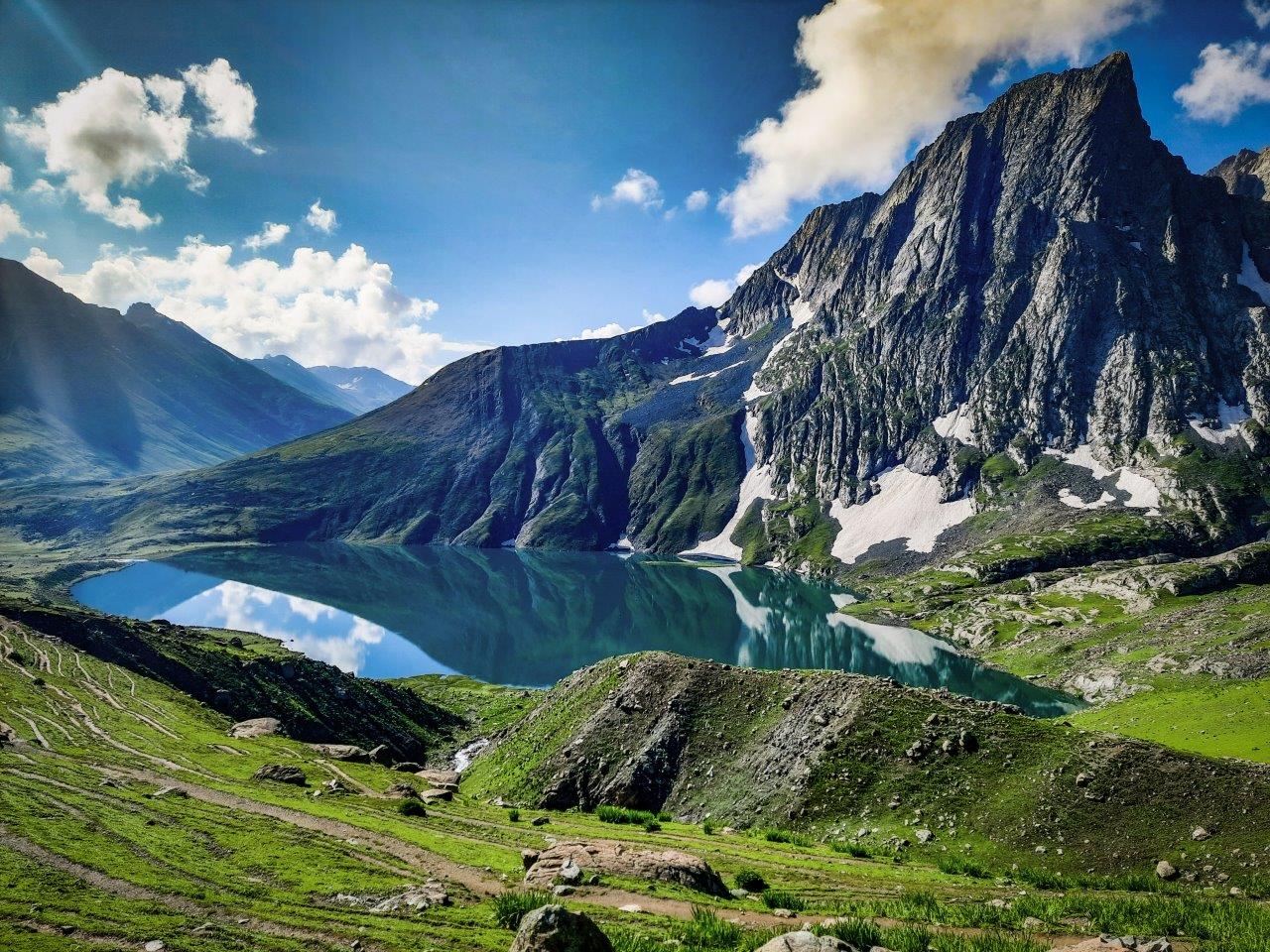
Day 3: Balu Ka Ghera to Hampta Pass and then to Shea Goru
- Trek Distance: 7 km
- Time: 7-8 hours of trekking
- Altitude: Gain from 3,600 m to 4,270 m at Hampta Pass, then descend to 3,810 m at Shea Goru
This is the adventure-filled day! After an early start, you’ll climb to Hampta Pass, the highest point of the trek. Here, you’ll see amazing views of both green and rocky valleys. After a break to enjoy the scenery, you’ll carefully trek down to Shea Goru, where Dream Trips has a comfortable campsite waiting.
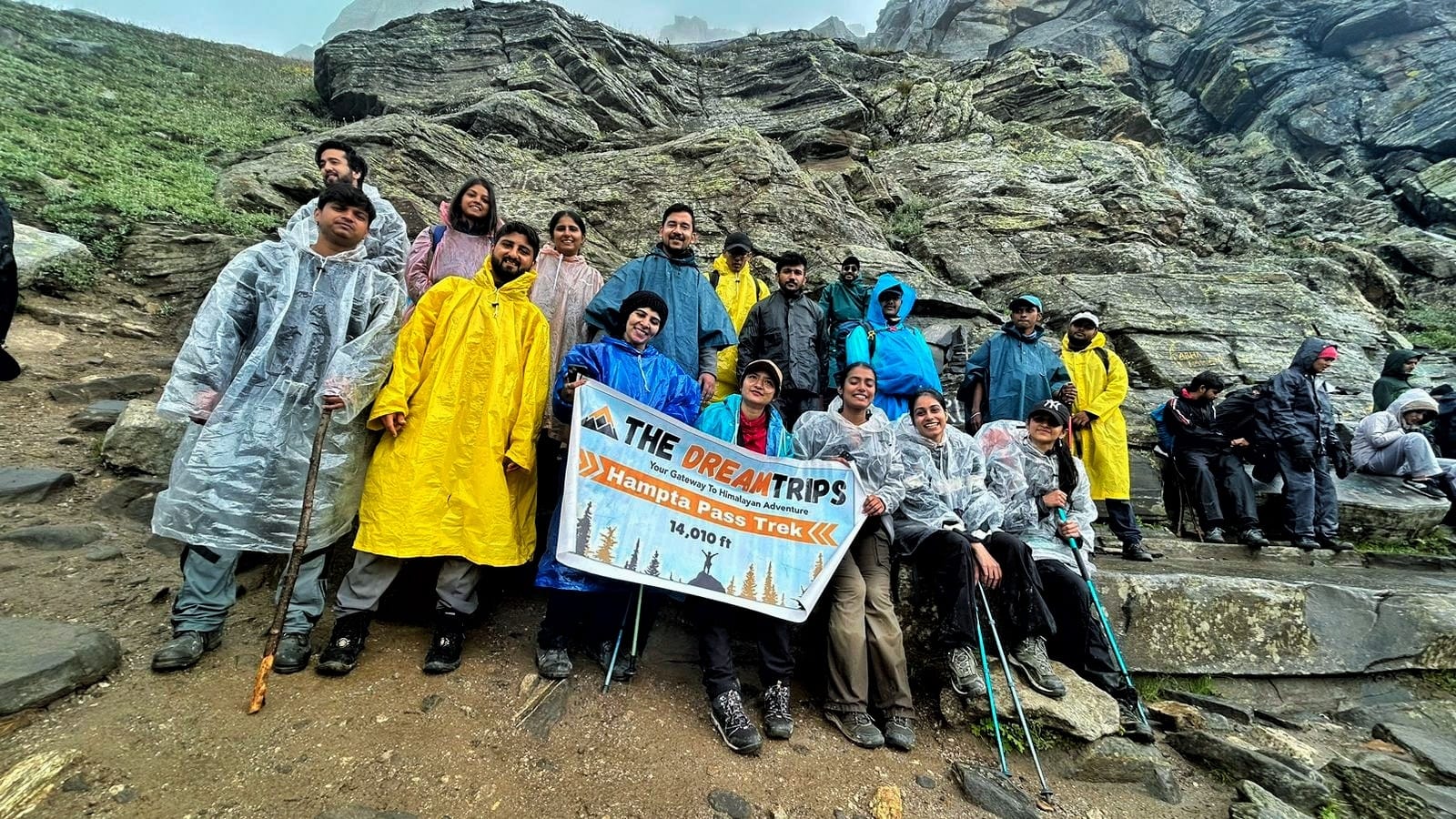
Day 4: Shea Goru to Chatru, then Drive to Chandra Tal
- Trek Distance: 5 km to Chatru
- Time: 4 hours of trekking
- Altitude: Descend from 3,810 m to 3,100 m at Chatru
Today’s trek from Shea Goru to Chatru is gentle and filled with views of rocky mountains and rivers. At Chatru, Dream Trips will drive you to the stunning Chandra Tal Lake (45 km), a beautiful, blue lake at 4,270 m. After a short visit to the lake, you’ll return to Chatru for the night.
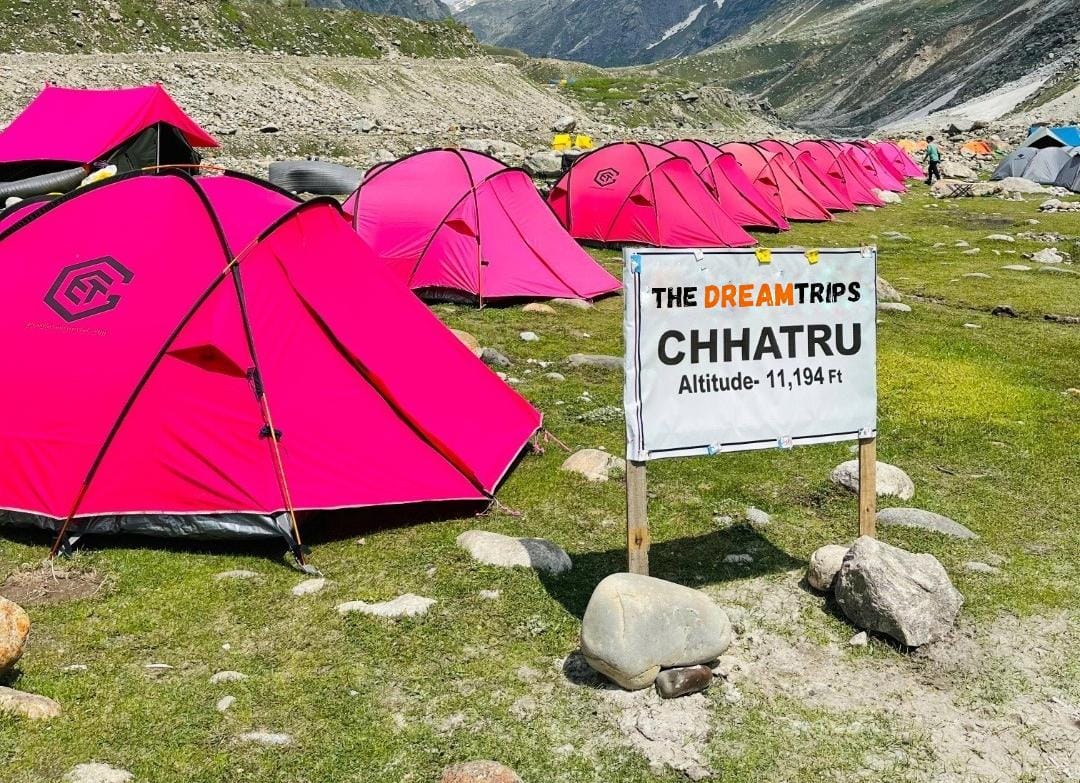
Day 5: Chatru to Manali (Drive)
- Drive: 4-5 hours (70 km back to Manali)
On the final day, you’ll drive back to Manali, carrying all the memories from this incredible trek. With Dream Trips, every part of the journey is planned for your safety and enjoyment, making sure everyone—whether beginner or experienced—has a wonderful time.
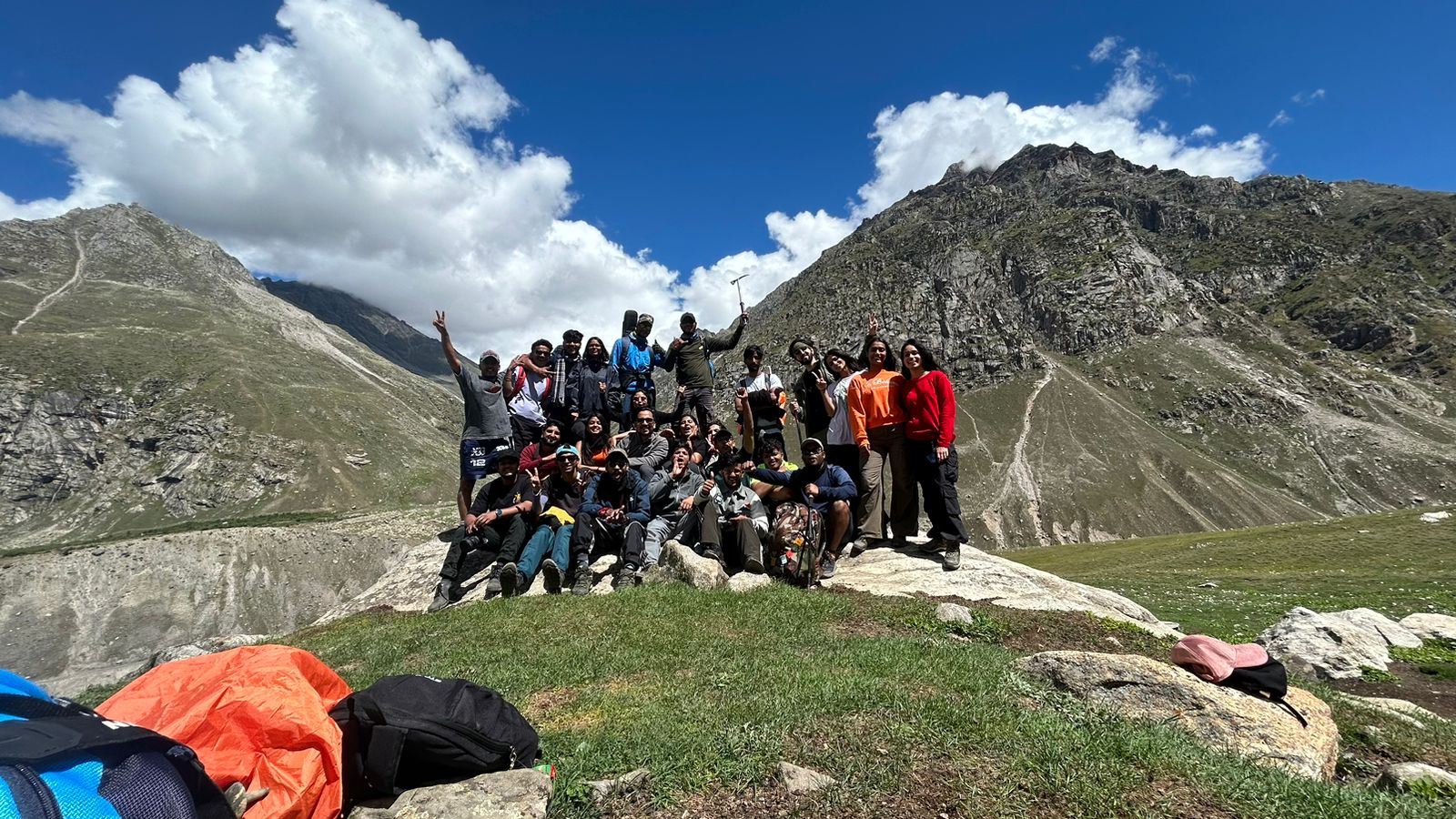
Hampta Pass Trek Route Map
This is the detailed Trek Route Map for the trek, which is curated freshly for you by our Pro Trek Team . This is a carefully crafted map that outlines the entire journey, which showcases all the key stop points and trails along the way. It includes the in-depth information about the terrains, the distance between two points of interest, and an estimated travel time that will help you to ensure you to have a safe and enjoyable trekking experience. Our Trek Route Map is specially designed to provide you with all the essential information that you need right at your fingertips for this trek . Whether you’re an experienced trekker or a beginner, and help you get prepared . The map will enhance your adventure experience, which will allow you to confidently navigate.

Altitude chart
The Trek Altitude Chart by The Dream Trips is a crucial tool for the one who is planning for a Himalayan Trek. This chart allows the trekkers to keep a track on their change in altitude in real-time, which allows them to have an efficient route planning and progress monitoring throughout the entire journey. Suitable for both first time hikers and experienced trekkers. The Dream Trips altitude chart offers a very comprehensive overview of the change in elevation, and promotes a safer and more enjoyable trekking experience to the trekkers. With The Dream Trips, you can enhance your journey in the Himalayas with confidence as their pro trek team takes care of your safety and security and by utilizing their tools that prioritizes safety and adventure during your travel.
Inclusions
-
Accommodation: Enjoy 4 nights in tented accommodation at our scenic campsites on a sharing basis, providing a unique outdoor experience.
-
Meals: Savor freshly cooked meals throughout the trek, starting with dinner on Day 1 and including breakfast and lunch on Day 5. Our meals are simple, nutritious, vegetarian, and designed to keep you energized, featuring non-repeated menu options to keep your taste buds satisfied.
-
Optional Transport: For added convenience, we offer shared jeep transport from Delhi o Manali and back, making your travel arrangements smooth and easy.
-
Trek Insurance: While trek insurance is optional, The Dream Trips highly recommends it for all trekkers. This insurance covers unexpected events during your trek, ensuring peace of mind. The cost of trek insurance starts from INR 210.
-
Trek Equipment: We provide essential trekking equipment, including sleeping bags, sleeping tents, kitchen tents, dining tents, and toilet tents, ensuring you have everything you need for a comfortable trek.
-
Amenities: Enjoy all necessary amenities, such as utensils, sleeping mattresses (black foam mats), crampons, and gaiters for snow, ensuring you are well-equipped for various terrains.
-
Health & Safety: Your safety is our priority. We provide a comprehensive First Aid Box, oxygen cylinders, stretchers, oximeters, and BP machines to ensure health and safety throughout your adventure.
-
Permits: We handle all necessary forest permits and camping permission fees, allowing you to focus on enjoying your trek without worrying about the logistics.
-
Trek Crew: Experience the support of our dedicated trek crew, including a high-altitude chef, helpers, trek leaders, and guides, who are all committed to making your trek enjoyable and safe.
-
Porters & Mules: To ease your load, we provide porters and mules to carry all trekking equipment, rations, and vegetables, allowing you to trek with comfort and focus on the breathtaking scenery.
Exclusions
-
GST (Goods and Services Tax): A 5% GST charge is mandatory and will be applied to the total cost of your trek.
-
Meals and Accommodation Not Included in the Itinerary: Any meals or accommodations outside of what is specified in the itinerary are not included.
-
Transportation Costs: Any bus or airfare to or from the trek start or end point is not covered in the package.
-
Personal Medical Expenses: We advise all trekkers to carry their own medications and be prepared for any personal medical needs during the trek.
-
Personal Services: Charges for personal services such as laundry, phone calls, alcoholic beverages, and bottled water are not included.
-
Entrance Fees: Entrance fees for monuments, monasteries, museums, or temples are not included and should be paid on the spot.
-
Offload Charges for Personal Baggage: If you wish to offload personal baggage, the charges are INR 365 per day, per bag if paid online (or INR 1500 at base camp). Please note that the weight limit for offloaded bags should not exceed 10 kg.
-
Emergency Evacuation Charges: Any costs incurred for emergency evacuation are not included and should be planned for accordingly.
-
Additional Services: Any services or activities that are not specifically mentioned in the inclusions section will not be provided.
Pro Bag-Packing Tips
In this photo, The Dream Trips presents essential pro bag packing tips designed for trekkers to ensure a successful adventure. Proper packing is crucial for any trekking experience, and knowing how to organize your gear can significantly enhance your journey. Whether you’re preparing for a high-altitude trek or a casual hike in the Himalayas, understanding how to pack efficiently can improve comfort and accessibility during your trip
Head Gears
Planning out for a trek? But don’t forget to carry the head gears to protect your beautiful face and head from the harmful UV rays of the sun, wind, and dust! It’s an essential accessory that will keep you safe and comfortable throughout your journey. So, make sure you pack it before you step out into nature!
Head Lamps – When you are trekking at night, head lamps are essential to navigate your path while keeping your hands free for safety. Head lamps come in different sizes and lumens, so it is essential to choose one that suits you best for the trip.
Hats or Cap – Caps or hats are also necessary when trekking in different weathers conditions. Caps protect your head from the wind and freezing temperatures at night, while hats provide shade and protection from the sun during the day. It is very essential to ensure that your hat has a strap to prevent it from being blown away by the wind.
Sunglasses – Sunglasses are also important for trekking. Your sunglasses should protect your eyes from harmful UV rays and fit your face perfectly to avoid falling off while climbing, jumping, or crossing obstacles. The glass of your sunglasses should also be designed for different weather conditions to provide optimal visibility.
Buff / Balaclava – Lastly, a buff or balaclava is a must-have to protect your mouth or neck from extreme temperatures and keep them warm. Buffs and balaclavas come in different materials, thicknesses, and designs, so it’s important to choose one that suits your needs and preferences. Depending on the weather conditions and your activities, you can wear them as neck warmers, face masks, or headbands.
With these essential items, you can enjoy trekking safely and comfortably, no matter the weather or time of day.
Clothes
Layering is important for different seasons when trekking. When planning a high-altitude trek, it is important to prepare for the cold weather. Wearing layers is the best approach as it provides both protection and flexibility when the weather changes frequently in the mountains. Layering helps to trap heat and keep your body warm, while at the same time allowing you to easily adjust your clothing as the temperature fluctuates. By wearing layers, you can enjoy your trek comfortably and stay safe in the unpredictable mountain weather
- For spring, summer, and monsoon treks, consider wearing three layers: a woollen sweater, a fleece, and a padded jacket.
- For autumn treks, add one more fleece layer to make it four layers.
- For winter treks, you may need five layers with thermals, a woollen sweater, two fleeces, and a padded jacket.
- T-shirt/sleeve shirt– Bring three T-shirts and two quick-dry trek pants, wearing one and carrying the others. Long sleeve shirts help to protect from sun UV rays. We recommend synthetic T-shirts as they get dry quickly when they get wet.
- Hiking / Trekking Jacket– down jackets (-5 to-10 C) or two-three-layer jackets.
- Thermals– at least two pairs of thermals help keep the body warm during cold weather.
- Undergarments– you can carry them according to your habitual and hygiene requirements.
- Gloves– 1 pair of gloves will keep your hand warm and nice.
- Trek Pants– Bring 2 to 3 comfortable trekking pants. Trekking pants play a significant role, as they are designed for comfort and mobility, making trekking easier. It should be Synthetic so that it gets dry quickly when wet.
- Rain Wear– you can carry a raincoat or Poncho. During long rains and snowfalls, the waterproof jackets start leaking. Still, the Poncho and raincoats keep you dry, so choose accordingly.
Tip: If you choose a raincoat on your trek, carry a small waterproof cover so things inside your backpack can’t get wet. If you carry a Poncho, you don’t need to worry. It protects both you and your backpack.
Foot Gears
- Trekking shoes which are waterproof and have ankle support. Walking / Hiking sandals which can be used off the trek, i.e., in the morning and evening hours when you reach the campsite, basically to get your feet rest from heavy boots, sometimes used for crossing streams and rivers, it’s more comfortable and safer than crossing barefoot or wetting your shoes. Sneakers (Optional) can be worn for normal driving days or used around the camp.
- Socks– you should at least carry 3 to 4 pairs.
- Microspikes & Gaitors will be provided by The Dreamtrips when required. You don’t have to carry them.
By Air:
Kullu Airport is the nearest airport toManali by flight, almost 60km from the city. You can find regular flights from Delhi to Kullu.
However, if you plan to reach Kullu by flight, it is better to come one day in advance.
By Train
Train are only available till Delhi and Chandigarh and after that a overnight volvo or a cab is needed to travel till Manali
From Delhi, you can find a regular bus service to Manali . ISBT Kashmere Gate is the central bus station in Delhi, from where you will find both AC and non-AC buses for Manali. And for luxarious volvos you can reach Majnu ka tila which is the hub for the buses to Manali
However, taking private buses from Majnu ka tila is always better. The bus will drop you at Manali Private volvo stand, which is also our pick up point for the trek.
Trek Preparation Guide
If you’re preparing for Kuari Trek, The Dream Trips recommends jogging as part of your fitness routine. Jogging helps work out the same muscle groups that you’ll use during trekking and can help you build endurance. You don’t need any special equipment to get started.
Fitness Target
.
For Easy – Moderate Treks – In order to be well-prepared for your upcoming trek, it is recommended that you focus on building your endurance by aiming to cover a distance of 4.5 kilometers in less than 45 minutes. This will help you to develop the necessary stamina and strength required to successfully complete your journey.
How to Achieve This Fitness Target?
To start preparing for your trek:
- Try jogging for at least five days every week.
- If you find 5 km too difficult at first, begin with 2 km and gradually increase over 2-3 weeks.
- Once you feel more comfortable running 5 km, focus on improving your speed gradually on a daily basis.
It is important to ensure that you can consistently complete 4.5 km in under 40 minutes for at least two weeks before your planned trek. Allow yourself 6-8 weeks to prepare physically for the journey.
Recommended Training & Exercises
For Easy – Moderate Treks – In order to be well-prepared for your upcoming trek, it is recommended that you focus on building your endurance by aiming to cover a distance of 4.5 kilometers in less than 45 minutes. This will help you to develop the necessary stamina and strength required to successfully complete your journey.
How to Achieve This Fitness Target?
To start preparing for your trek:
- Try jogging for at least five days every week.
- If you find 5 km too difficult at first, begin with 2 km and gradually increase over 2-3 weeks.
- Once you feel more comfortable running 5 km, focus on improving your speed gradually on a daily basis.
It is important to ensure that you can consistently complete 4.5 km in under 40 minutes for at least two weeks before your planned trek. Allow yourself 6-8 weeks to prepare physically for the journey.
Recommended Training & Exercises
For Easy – Moderate Treks – In order to be well-prepared for your upcoming trek, it is recommended that you focus on building your endurance by aiming to cover a distance of 4.5 kilometers in less than 45 minutes. This will help you to develop the necessary stamina and strength required to successfully complete your journey.
How to Achieve This Fitness Target?
To start preparing for your trek:
- Try jogging for at least five days every week.
- If you find 5 km too difficult at first, begin with 2 km and gradually increase over 2-3 weeks.
- Once you feel more comfortable running 5 km, focus on improving your speed gradually on a daily basis.
It is important to ensure that you can consistently complete 4.5 km in under 40 minutes for at least two weeks before your planned trek. Allow yourself 6-8 weeks to prepare physically for the journey.
Recommended Training & Exercises
Trekking is a demanding activity that requires good cardiovascular endurance, muscular strength, and overall fitness. To help you prepare for your trek, incorporating bodyweight exercises into your training routine can be an effective way to build strength, improve stability, and enhance endurance, all of which are crucial for a successful trek. In this regard, here’s a breakdown of body weight exercises categorized by the specific body parts they target and the benefits they offer during trekking.
1. Lower Body Exercises
Lower body exercises like squats and lunges are great for building lower body strength, essential for trekking.
a. Squats
Squats are an excellent exercise for building lower body strength, essential for trekking. They target the quadriceps, hamstrings, glutes, and calves. Solid quadriceps and glutes provide power for ascending and tackling uphill climbs, while vital hamstrings aid stability during descents. This is particularly helpful in navigating uneven terrain during trekking.
How to perform Squats Exercises:
- Stand with feet shoulder-width apart, toes pointing slightly outward.
- Lower your body by bending your knees and hips, keeping your back straight.
- Lower until your thighs are parallel to the ground or as low as comfortable.
- Push through your heels to return to the starting position.
b. Lunges
Lunges target the quadriceps, hamstrings, glutes, and calves. They improve lower body strength, balance, and stability, crucial for maintaining control on rocky trails and steep slopes. Additionally, they enhance flexibility, reducing the risk of injury while trekking.
How to Perform Lunge Exercises:
- Stand with feet hip-width apart, hands on hips or sides.
- Take a step forward with one foot, lowering your body until both knees are bent at 90-degree angles.
- Push through the heel of your front foot to return to the starting position.
- Repeat on the other side, alternating legs.
2. Upper Body Exercises
Upper body exercises such as push-ups and pull-ups effectively strengthen the upper body, especially the chest and shoulders, which are essential for carrying a backpack during treks.
a. Push-Ups
Targets: Chest, shoulders, triceps, and core.
Benefits for Trekking: Push-ups are an effective exercise to strengthen the upper body, especially the chest and shoulders, essential for carrying a backpack during treks. Improved upper body strength will also help maintain posture and stability while traversing challenging terrain.
How to Perform Push-Ups Exercises:
- Start in a plank position with hands shoulder-width apart and body in a straight line from head to heels.
- Lower your body by bending your elbows until your chest nearly touches the ground.
- Push through your palms to return to the starting position.
- Keep your core engaged throughout the movement.
b. Pull-Ups/Bodyweight Rows:
Targeting the back, biceps, and shoulders can significantly benefit trekking. You can strengthen these muscle groups by performing pull-ups or bodyweight rows and improve your posture and balance while carrying a backpack. Additionally, more muscular back muscles can help reduce the risk of back strain and fatigue during long treks, making your journey safer and more comfortable.
3. Core Exercises
Core exercises like planks and Russian twists can help strengthen the core muscles, which are crucial for maintaining stability and balance while trekking on uneven terrain.
a. Planks
Targets: Abdominals, obliques, and lower back.
Benefits for Trekking: Planks are an effective exercise that helps strengthen the core muscles. These muscles are crucial for maintaining stability and balance while trekking on uneven terrain. A strong core also helps improve posture, reducing the risk of back pain and fatigue during extended hikes.
How to Perform Planks Exercises:
- Start in a plank position with elbows directly under shoulders and body in a straight line from head to heels.
- Engage your core and hold the position, avoiding sagging or arching the back.
- Keep breathing steadily and hold for the desired duration.
b. Russian Twists
Targets: Obliques, abdominals, and lower back.
Benefits for Trekking: Russian twists engage the core muscles, particularly the obliques, improving rotational stability and balance. Enhanced core strength helps prevent injuries and improves overall performance during trekking.
How to Perform Russian Twist Exercises:
- Sit on the ground with knees bent and feet flat, leaning back slightly to engage the core.
- Clasp hands together and twist the torso to one side, bringing the hands towards the ground beside the hip.
- Return to the centre, then twist to the other side.
- Continue alternating sides for the desired number of repetitions.
4. Full Body/Cardiovascular Exercises
Full-body/cardiovascular exercises like burpees and mountain climbers are excellent for improving cardiovascular endurance, strength, and agility.
a.Burpees
Burpees are an excellent full-body exercise that targets your legs, chest, arms, and core. This exercise dramatically benefits trekking enthusiasts, improving cardiovascular endurance, strength, and agility. Regularly incorporating burpees into your workout routine can enhance your overall fitness level, which can help you endure long hikes and rugged terrains with ease.
How to Perform Burpees Exercises:
- Start in a standing position.
- Squat down and place hands on the ground.
- Jump feet back into a plank position.
- Perform a push-up.
- Jump feet back to the squat position.
- Explosively jump up into the air, reaching overhead.
- Land softly and repeat the sequence.
b. Mountain Climbers
Mountain climbers target the core, shoulders, chest, and legs. This dynamic, full-body exercise can significantly improve cardiovascular endurance and agility. It is an excellent functional workout for trekking preparation as it engages both the upper and lower body muscles while strengthening the core muscles.
How to Perform Mountain Climbers Exercises:
- Start in a plank position with hands shoulder-width apart and body in a straight line from head to heels.
- Drive one knee towards the chest, then quickly switch legs, alternating in a running motion.
- Keep the core engaged and the hips stable throughout the movement.
- Continue at a moderate to fast pace for the desired duration.
Incorporating bodyweight exercises into your training routine can help you build strength and endurance and prepare your body for the physical demands of trekking. Consistency and proper form are crucial to maximizing the benefits of these exercises and ensuring a safe and enjoyable trekking experience. Engaging your core muscles, including obliques, abdominals, and lower back, with Russian twists can improve your rotational stability and balance, preventing injuries and enhancing overall performance during trekking.
When incorporating strength training exercises into your workout routine, it’s essential to maintain proper form and technique to avoid injury. Start with lighter weights and gradually increase the intensity as you progress, focusing on compound exercises targeting multiple muscle groups simultaneously. Some examples of practical strength training exercises for trekking include squats, lunges, deadlifts, and pull-ups.
Remember to give your muscles time to recover between workouts, and remember to stretch before and after your workouts to prevent injury and improve flexibility. Combining strength training with jogging and proper stretching allows you to take your fitness to the next level and confidently tackle even the most challenging treks
Food Provided By Us During Hamptai pass Trek
Delicious Indian Vegetarian Meals on Your Trek with The Dream Trips
At The Dream Trips, we take pride in providing our trekkers with wholesome and flavorful Indian vegetarian meals throughout your adventure. Our carefully curated menu primarily consists of Indian bread, a variety of vegetables, lentils, rice, and delightful desserts, ensuring a satisfying dining experience after a day of trekking. Each day, you will enjoy three nutritious meals: breakfast, lunch, and dinner, alongside evening snacks that include tea, snacks, and comforting soup to warm you up before dinner. On longer trekking days, we also provide packed snacks to keep your energy levels high.
Our meal plannings are completely based on extensive research into trekkers nutritional requirements and to fulfill them, taking into account the challenges posed by altitude and weather conditions. The meals we serve are perfectly balanced, packed with essential calories, carbohydrates, vitamins, protein, fiber, and minerals to fuel your trek. Our skilled cooks are experts in preparing delicious dishes and have undergone thorough training to ensure that every meal is enjoyable.
Start your day on a refreshing note with a cup of lemon tea in your tent, followed by a hot and delicious breakfast featuring options like upma, aloo paratha, besan chilla, poha, daliya, cornflakes, or Maggie, complemented by tea or coffee.
For those embarking on longer treks, we offer fresh local fruits such as apples and healthy drinks like Frootie or Maaza to keep you energized. Lunch is a simple yet healthy affair, and around 4:00 PM, we treat you to tea and light evening snacks. After a rewarding day of trekking, you will return to a campsite where a hot and delightful dinner awaits, ensuring you end your day on a comforting note.
With The Dream Trips, you don’t need to worry about food. Our commitment to providing delicious and nutritious meals is one of the reasons why many trekkers return to us time and again. Join us for an unforgettable trekking experience where great food is part of the journey!
Trekking with The Dream Trips in the Kedarkantha Trek is entirely safe because we have a team of trek leaders qualified in Wilderness first-aid and complete information about the high-altitude glitches. During the trek, we carry a full first-aid kit that contains all the essential medicines. Before trekking with us, you must ensure that you are medically fit for the trek; for us, your medical fitness is more important than anything else.
Right from our establishment, we at The Dreamt Trips have been continuously introducing new safety practices into Indian trekking to ensure the safety of voyagers.The Dreamtrips introduced microspikes and made emergency bottled oxygen mandatory for all treks. Our trek leaders take your daily Pulse oximeter reading. We at The Dreamtrips introduced the radio walkie-talkie as a safety communication device.
How can we ensure that your trek is safe with us?
We have noticed that most trek-organizing organizations do not follow these systems, but with time, they are following us; several competing companies are adopting these practices and organizing great, safe treks.
We ensure complete technical safety in the mountain. Our company has a vast team of more than 100 guides and trek leaders who serve on Himalayan treks. One of the best things about our team is that all the members are trained professionally by the Nehru Institute of Mountaineering, Indian Mountaineering Foundation Delhi, and Hanifle Center Outdoor Education Mussoorie.
Explore our New Safety Protocols
To ensure a perfect Trek, we have introduced some new safety checks to ensure excellent safety for our trekkers.
Our On-trek safety checks include:
- Daily oxygen saturation, along with pulse readings
- Stretchers team appointed on every trek
- Radios
- Trained mountain staff and complete safety
- Additional oxygen cylinders
- Special medical kit for high-altitude treks
- Microspikes on all types of snow treks
- Experienced Trek leaders, as well as safety
- Technical team on all snowy slopes
For Us, Your Safety Is the Top Priority
At The Dream Trips, you will find a team with local knowledge and fluency in English and Hindi. This helps ensure that you have a fantastic trek. Not only this, but we also pay attention to your health and safety because this is something we cannot ignore. All the team leaders involved in trekking have already undergone several professional courses in first aid, portable altitude chamber training, CPR, environmental awareness training, and advanced wilderness emergency medicine.
We also carry a complete first aid medical kit on every trek and trip we organize. Apart from the medical kit, we take a portable altitude chamber (if needed) and medical oxygen for all high-altitude treks. Our company has significant expertise in organizing all sorts of group adventure holidays for family groups, school and college groups, and friend groups. We have many travel options that suit different fitness levels and travelling styles.
Regardless of the group size, we value each and every member of our trekking groups. Our commitment to personal attention ensures that your needs and safety are always our top priority.
Must Read These Information
-
Why should you choose us?
Booking your adventure with Dream Trips ensures an unforgettable experience on the Trek. Our expert guides provide safety and local insights while you enjoy delicious, freshly cooked Indian vegetarian meals. We offer tailored itineraries for all trekking levels, comfortable accommodations, and all-inclusive packages to make your journey hassle-free. Committed to sustainable travel, we support local communities and prioritize your well-being. Join us for a remarkable trek and create lasting memories with fellow adventurers.
-
Why Dream Trips is pocket friendly?
The Dream Trips is pocket-friendly because we focus on providing exceptional value without sacrificing quality. Our all-inclusive packages cover essential services such as meals, accommodations, transportation, and permits, which means you won’t encounter unexpected expenses along the way. We partner with local service providers and experienced guides, allowing us to maintain low costs while ensuring high-quality experiences. Additionally, we offer flexible pricing options and seasonal discounts to make trekking accessible to everyone. Our carefully planned itineraries maximize the value of your adventure, allowing you to explore breathtaking destinations like the Kedarkantha Trek without stretching your budget. With The Dream Trips, you can embark on incredible journeys and create lasting memories without worrying about the cost!


